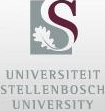American writer and Nobel Laureate Pearl Buck once said: “If you want to understand today you have to search yesterday.” At Stellenbosch University (SU), an investigation into the history of the University would undoubtedly lead you to the SU Archive. In light of Heritage Month, the Corporate Communication and Marketing Division looked at the people, processes and infrastructure that preserve the history of the University.
The Archive was established in 1996 at the request of the former Rector, Prof Andreas van Wyk. The purpose of the Archive is to collect, preserve and make available resources related to the University and its predecessors, the Stellenbosch Gymnasium and Victoria College, to those interested.
According to Karlien Breedt who has been the head of the SU Archive since early 2011, there are several reasons and criteria that determine which documents are kept. “In many cases, we are required by law to keep documents such as administrative and financial records. Other documents are archived so that they can be made available for research. One often asks oneself the question: Will it be used in the future?”
Breedt and her colleague, Qobolakhe Bohta, staff the archive and are always looking for publications, photographs and documents that capture the history and heritage of the University.
The oldest document in the SU Archive is a minutes dating back to 1864 – even before the existence of the then Victoria College. “Although it has been restored, the contents of this document are unfortunately illegible. I suspect it contains information about the establishment of the then Stellenbosch Gymnasium,” says Breedt. Other documents include, among others, property rights, minutes of Council and Senate meetings, yearbooks, as well as minutes and records of faculties, departments and societies.
“We also have an awful lot of pictures of people, buildings and events,” Breedt says. “We have two major collections – the Watson-Lockley Collection which depicts the period from c. 1900 to 1960 and the Edrich Photo Collection which includes photographs from 1946 to 2000. Both of these collections include thousands of photographs depicting the academic and social life of the University.”
The Archives regularly receives donations when staff members retire. “We then have to work through all the documents, clippings and photos to see if there is anything of value. There are almost always boxes full of things in our storeroom that need to be processed,” says Breedt.
Although there is an inventory and database of all the documents housed in the Archive, it cannot currently be found with an online search. Many of the sources, such as all the editions of Matieland and the abovementioned collections of photographs, have already been digitised. The digitisation of resources is an ongoing process as it is a very efficient way of preserving information and making it more widely available. It is planned to increase the online findability of the material.
In order to preserve physical documents, the temperature is kept at a constant 18° C and the humidity is limited to 40–50% Relative humidity (RH). Regular inspections are also conducted to ensure that other pests do not damage the sources. According to Breedt, the frequent power outages due to load shedding are not ideal, but it helps a lot that the archive is housed in the storage space under the lecture hall on the first floor of the Krotoa Building because it helps to limit temperature fluctuations.
On 10 December 2010, a fire destroyed a large part of the Krotoa Building (then still the RW Wilcocks Building). Water used to extinguish the fire seeped through the floor above the archive, causing a lot of the photographic material to become mouldy. “With the restoration of the building, the Archive was also upgraded and equipped with, among other things, sliding racks and a new gas firefighting system," explains Breedt. The renovation work also led to the creation of research, exhibition and reading spaces.
Breedt and Bohta regularly receive requests for information that is used in the compilation of publications – be it a book on the University's buildings or 100th anniversary, or the centenary celebration of the Faculty of Science, or a thesis – the archive is a treasure trove.
Of course, the archival sources also include parts of SU’s history of which the University is not proud, but Breedt reminds us “that one must stay objective because those items have academic and research value”.
And between all the documents, minutes, clippings and photos, there are also things that amaze and sometimes make one giggle. “There are letters in which staff had to apply for permission to live outside the boundaries of the town,” Breedt laughs.
Another such example dates back to the early 1960s when trousers were not commonly worn by women. “During this time, students had to ask permission in advance if they had to travel to SU from afar by train and would be wearing trousers on their arrival at the University. That says something about the zeitgeist,” she reckons.
Visiting the SU Archive
The SU Archive can be visited by appointment. To make an appointment, follow this link: Archive visits
Visiting hours: Monday to Thursday: 08:30–13:00, 14:00–16:00; Friday: 08:30–13:00
The Archive is closed on weekends and public holidays, as well as between Christmas and New Year.

